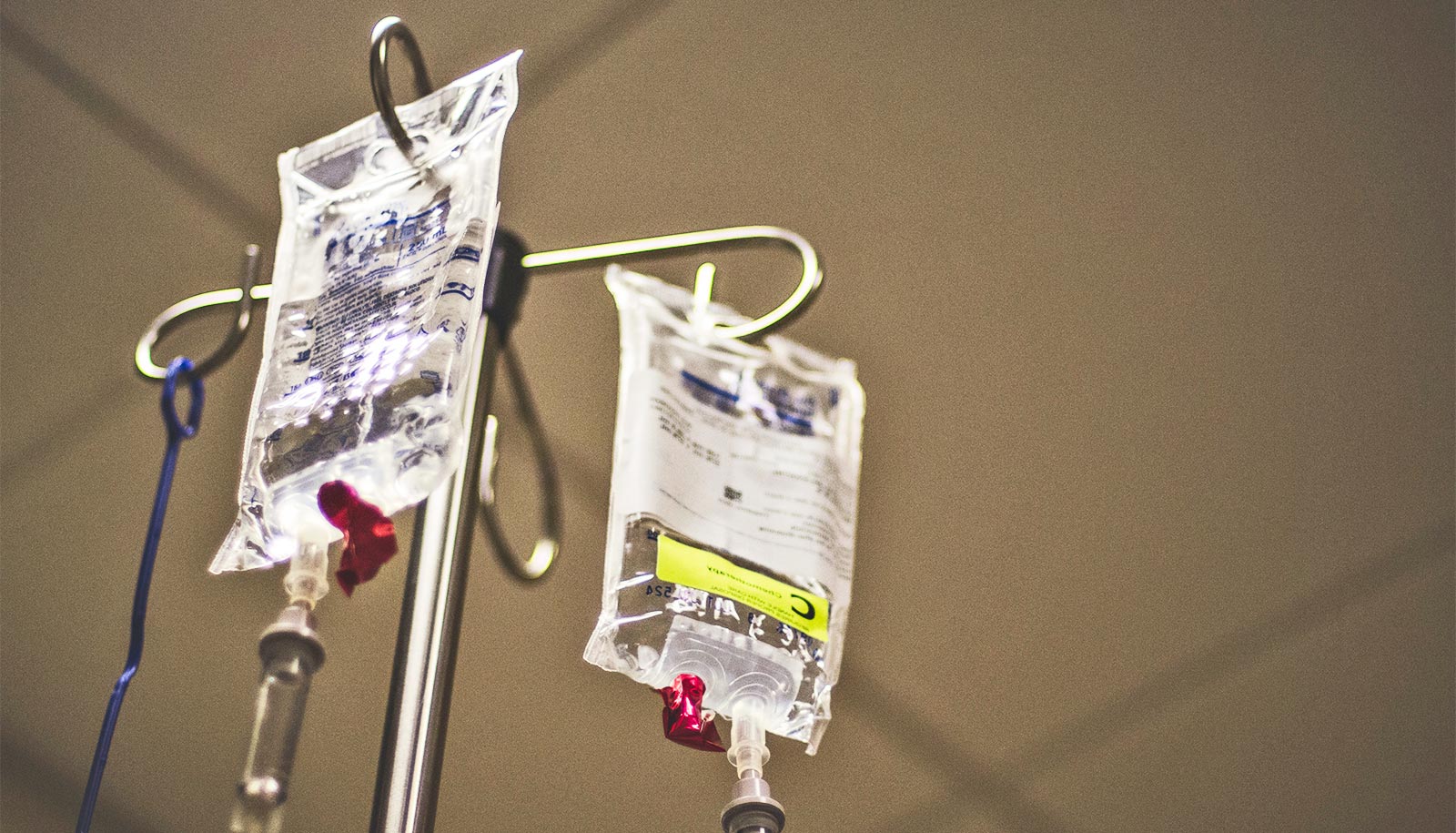A new discovery offers a simple way to boost the accuracy of diagnostic tests for medicine and common assays for laboratory research.
Adding polydopamine—a material that was first isolated from shellfish—to these tests at a key step, increases the sensitivity of common bioassays by as many as 100 to 1,000 times.
More sensitive tests will allow scientists to identify pathogens, diseases, and specific cellular proteins even when the “biomarkers” are present at levels far below the detection threshold of today’s standard tests. Initial results show polydopamine boost the accuracy and resolution of tests for biomarkers of HIV, Zika virus, and proteins on cancerous tumors.
“Common bioassays are the real workhorses of laboratory experiments and medical tests,” says Xiaohu Gao, professor of bioengineering at the University of Washington. “By boosting the sensitivity of these tests, we can enable more accurate medical diagnoses earlier in a disease or condition, and enable more certainty and less waste in the research process.”
Gao led the team that developed this simple modification for many common medical and laboratory assays. The approach—known as enzyme-accelerated signal enhancement, or EASE—is reported in Nature Biomedical Engineering.
EASE centers on the simple addition of two biochemical components, dopamine and horseradish peroxidase, or HRP, at a key step. HRP is a common protein enzyme used to speed up the rate of reactions in biomedical research.
Sticky mussels inspire medical ‘super glue’
Researchers discovered that HRP can connect dopamine molecules together to form the polymer chain polydopamine. Polydopamine, in turn, accumulates on the surfaces of reaction vessels, such as small petri dishes.
Once the polydopamine is present, scientists can continue the traditional steps of their protocols, but now with a substantially increased test sensitivity. Researchers hope that this simple modification will make it easier to incorporate EASE into their common practices and procedures.
“Scientists have been trying to improve the accuracy of these common tests for decades, but solutions often involve entirely new protocols or costly pieces of equipment,” Gao says. “Understandably, researchers can be reluctant to invest in unfamiliar protocols or expensive new equipment—but EASE is a simple addition to tried-and-true assays. It’s like a software upgrade, instead of changing your operating system.”
These assays include some of the most common medical and laboratory tests, such as ELISA, microarrays, FISH, and immunohistochemistry imaging. Some of these assays have been used for decades to help hospitals and doctors detect signatures of a disease, ailment, or other conditions by looking at a patient’s blood, other body fluids, or cells. Depending on the test, the telltale signs could be pieces of a bacteria or virus, a chemical, antibodies made by white blood cells, a hormone, or even pieces of DNA.
But if these compounds are present at extremely low levels, diagnostic tests can miss them and return inaccurate medical information. By increasing sensitivity, EASE reduces uncertainty and even increases the amount of information these tests can provide.
Is HIV cured or still lurking? New test can say
For example, the team used EASE to detect the presence of Zika virus in the placental tissues of primates. But EASE made the assay so sensitive that they were able to see which types of cells within the placenta were infected.
As often happens in research, Gao and colleagues didn’t set out to solve this problem. Polydopamine was originally isolated from mussels decades ago, and researchers already knew that the substance can react with proteins. But the only protocol they had to form polydopamine necessitated a passive, time-consuming protocol.
Lead author Junwei Li, a doctoral student in materials science and engineering, was using the new approach to coat nanoparticles with polydopamine when he noticed that HRP can react with dopamine to form polydopamine, and the approach is substantially faster.
The scientists don’t yet fully understand why adding polydopamine boosts the sensitivity of these bioassays. But for now, Gao’s focus is on applying EASE to even more diagnostic tests and diseases.
“EASE has potential to solve real, long-standing problems in research and medical tests.”
The National Institutes of Health, the University of Washington, and the Howard Hughes Medical Institute funded the work.
Source: University of Washington



